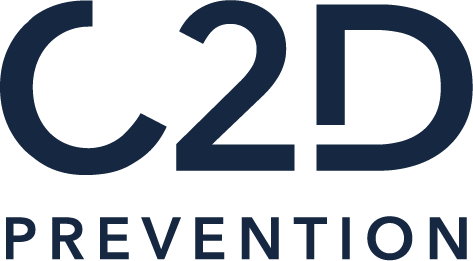WORKSHOP
Neuroscience & Risk

The Importance of Good Postures at Work
Every day, we operate in professional environments where speed, performance, and risk management are essential. Yet, despite training, procedures, and experience, errors still occur. Why? Because we too often forget that the human brain itself has its limits, its automatisms, and its blind spots.
This workshop offers an immersive journey into the heart of neuroscience to understand how the way our brain functions directly influences our ability to manage risks. Through a fun, interactive, and accessible approach, participants gain awareness of the invisible mechanisms that influence their decisions and behaviors at work.
This workshop is neither too technical nor guilt-inducing. It brings the human factor back to the center of prevention efforts with a simple objective: building a safety culture that is better aligned with the realities of human functioning.
OBJECTIVE
What if our brain was both our best ally and our main risk factor?
This workshop shows how our cognitive mechanisms directly influence our decisions and behaviours when faced with risk.
CONTENT
- Deciphering how the brain works to better prevent errors.
- Identifying human limitations that expose us to risky situations.
- Topics covered: human error, cognitive biases, decision-making, vigilance.
- Practical exercises: interactive scenarios and concrete tools to enhance everyday safety.
FORMAT
- Coaching: case studies, neuroscientific tools, guided and fun exercises, interactive discussions
MAKE PREVENTION A REFLEX!
REGISTER YOUR COMPANY NOW
and ensure a safer work environment for everyone!
Format & Target Audience
The workshop can be delivered in person or remotely
(online version led by a certified VILT – Virtual Instructor-Led Training – coach).
Designed for in-person facilitation, it is suitable for employees and all levels of leadership.
Recommended group size: 6 to 12 participants to encourage interaction and meaningful feedback.
An Educational, Engaging, and Inclusive Workshop
Designed as an interactive session, this workshop is intended for all levels of the organization: frontline staff, managers, safety officers, QHSE teams, and executives.
By combining scientific rigor with educational accessibility, it demystifies neuroscience and turns it into a practical lever for improving safety on a daily basis.
No complex jargon—just concrete insights, relatable examples, and discussions that encourage everyone’s active participation.
Depending on the time available
Workshop Programme
Optimal for conference formats, the workshop is structured into two key sessions:
1Neuroscience & Risk: Debunking Common Misconceptions
The first essential step is understanding that our usual perceptions of safety and accidents are often incomplete, or even incorrect.
In this first part, participants are invited to:
- Rethink and understand the concept of human error in light of insights from neuroscience.
- Acknowledge that even experienced professionals remain exposed to the biological and functional limits of their brain.
- Discover how automatic information processing, omnipresent in daily life, influences our behaviors without us even realizing it
This approach helps participants grasp why incidents and accidents are not solely the result of negligence or incompetence but are also a natural consequence of how the human brain functions.
2Decision-Making & Prevention: Adapting Systems to Human Reality
Risk prevention largely relies on behaviors, decisions, and individual interpretations. Yet, these elements themselves are influenced by brain mechanisms that often escape our conscious control.
In this second part of the workshop, we will address:
- The internal processes through which our brain filters , simplifies, or interprets information in complex environments.
- The impact of these mechanisms on our decision-making , especially in risky and/or high-pressure situations.
- The importance of adapting management approaches , prevention systems, and communication methods to these human realities.
The goal is not to stigmatize errors, but to design work environments that account for the natural limits of our brain, to effectively reduce risks.
Why choose
this Workshop ?
The benefits are numerous and concrete:
Gain accessible
Gain accessible
Develop awareness of human limitations
to better design realistic and effective prevention strategies.
Build a more human-centered safety culture
based on knowledge, collective vigilance, and organizational adaptability.
Increase team engagement by promoting individual responsibility
without fostering guilt.
Achieve lasting reduction in accidents and incidents
by addressing root causes beyond just observable behaviors.
Give real meaning to prevention practices
(Pre-Job Briefings, Safety Time-Outs, Toolbox Talks, Safety Walks, etc.).
Conclusion: Towards a More Human and More Effective Safety Culture
Recognizing that our brain operates largely on automatic processes,
that it filters information, simplifies complex environments, and can lead us astray is not a weakness.
It is an unavoidable biological reality.
Rather than resisting it, it is time to work with it. By understanding the brain’s natural mechanisms,
we can better anticipate risks, strengthen vigilance, and create work environments that genuinely protect individuals.
Offer your teams an inspiring experience that blends neuroscience, prevention, and pragmatism.
Contact us today to organize this workshop within your organization.
